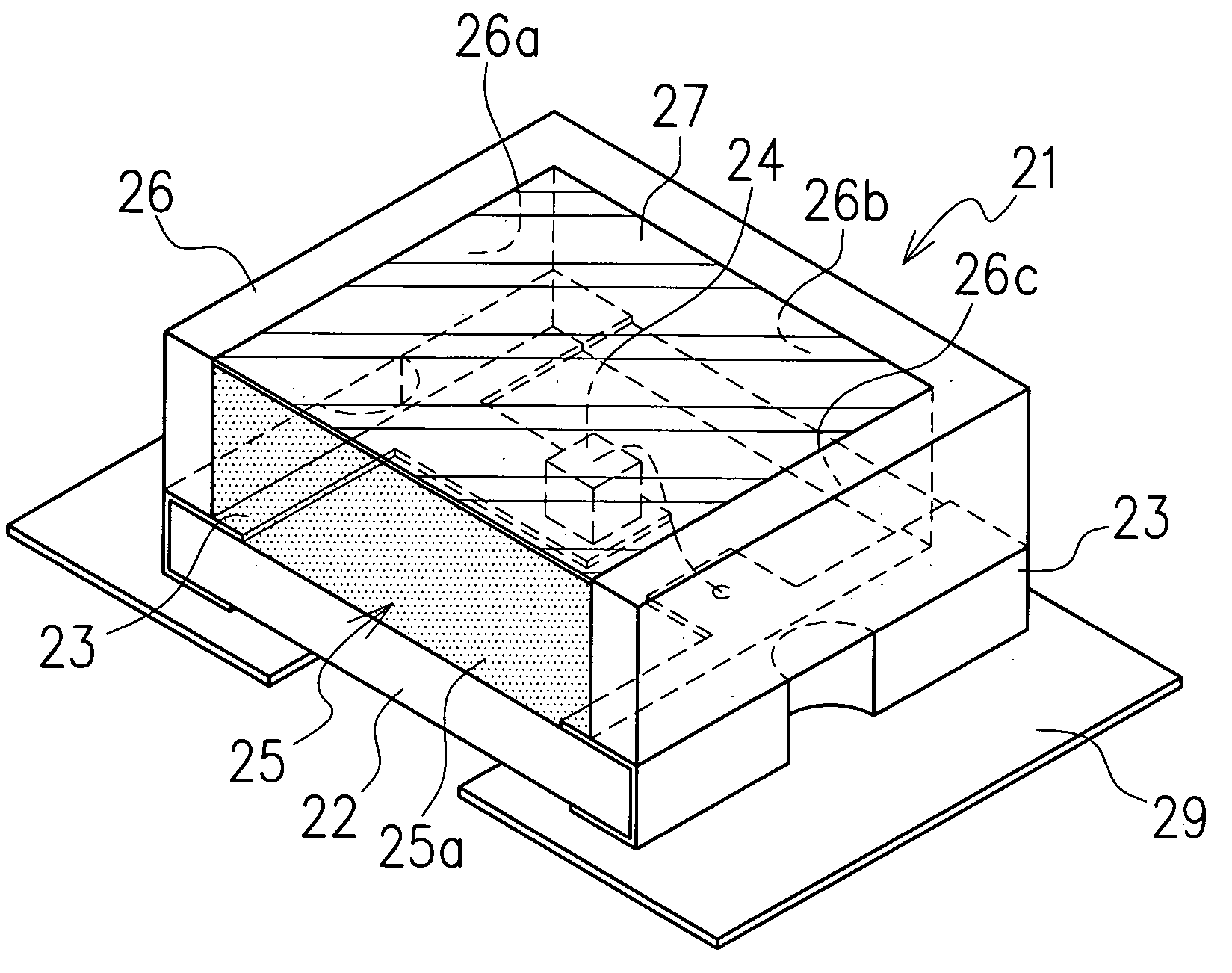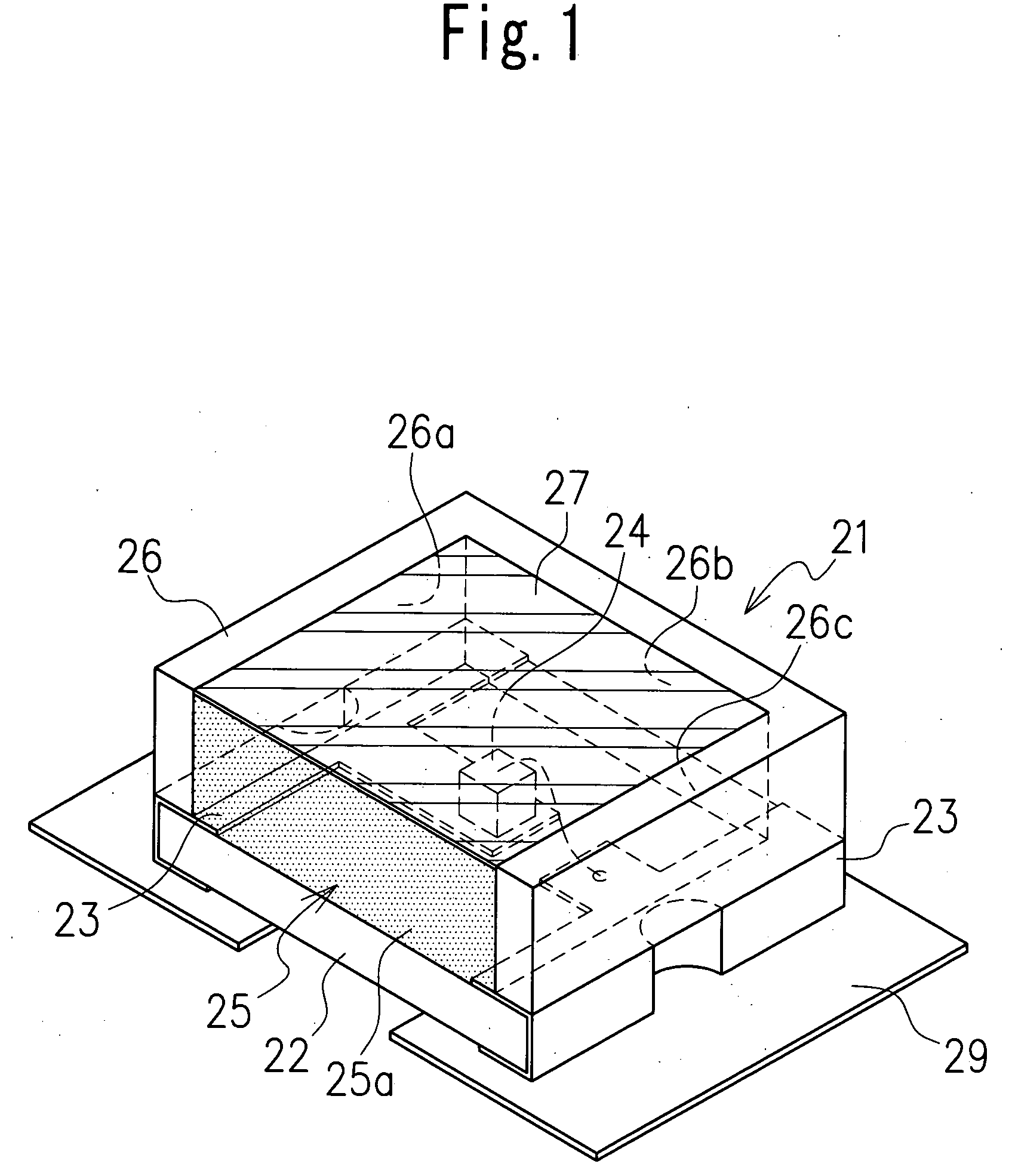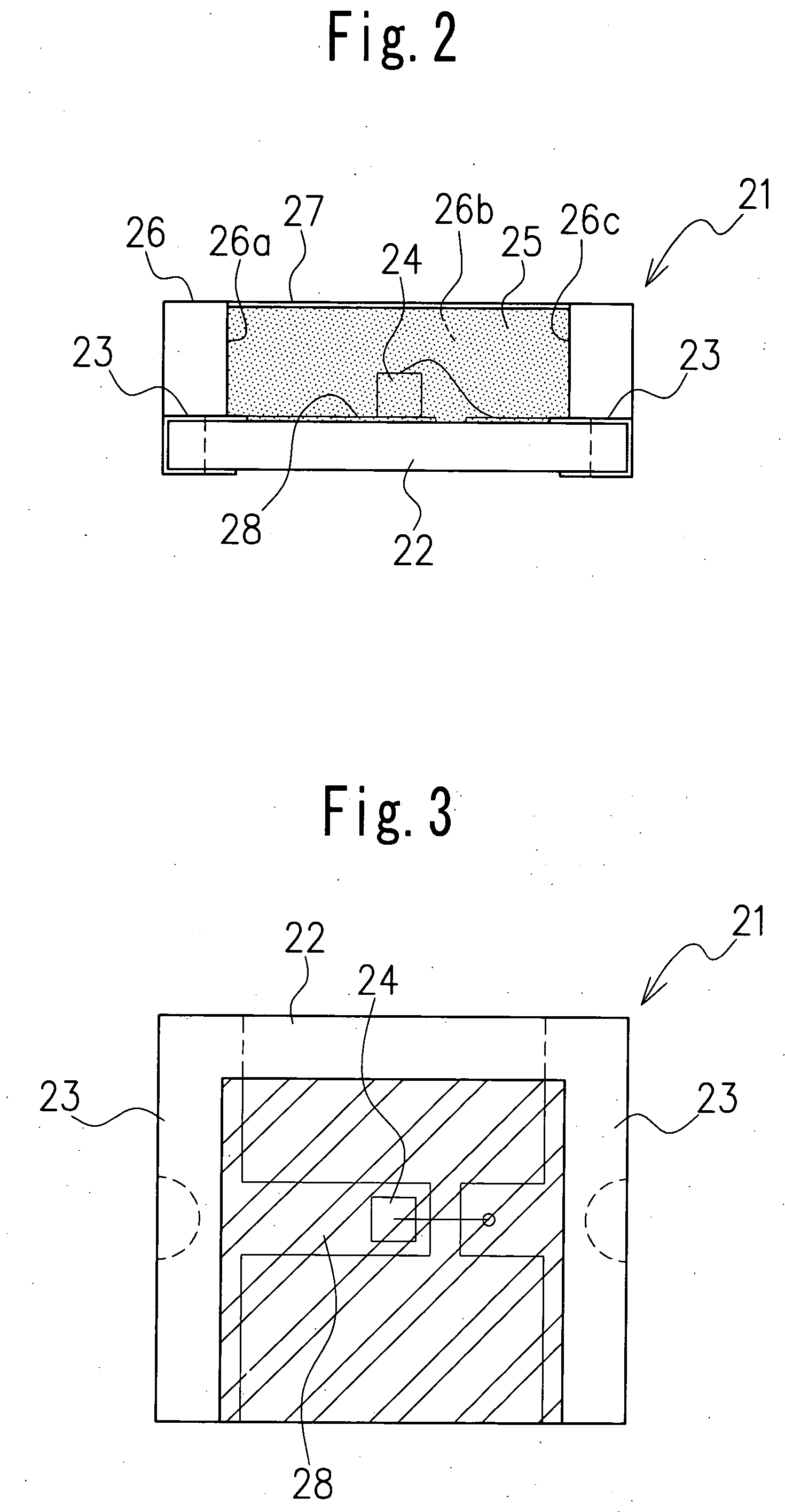Light emitting diode
a diode and light-emitting technology, applied in the field of light-emitting diodes, can solve the problems of inability to adapt to back-light sources and the growing demand for smaller thicknesses, and achieve the effect of reducing thickness and high efficiency
- Summary
- Abstract
- Description
- Claims
- Application Information
AI Technical Summary
Benefits of technology
Problems solved by technology
Method used
Image
Examples
first embodiment
[0026]FIG. 1 is a perspective view of the LED of the invention; FIG. 2 is a cross-sectional view of the LED shown in FIG. 1; and FIG. 3 is a plan view of the LED shown in FIG. 1.
[0027] As shown in FIG. 1 to FIG. 3, the LED 21 of this invention comprises an LED chip 24 mounted on a chip substrate 22 formed by glass epoxy or BT resin (bismaleimide triazine resin), a light transmissive resin body 25 that seals the LED chip 24 on the chip substrate 22, a reflective frame 26 enclosing the light transmissive resin body 25 on three sides, and a reflective film 27 formed over the light transmissive resin body 25. On its three inner sides the reflective frame 26 has reflecting surfaces 26a, 26b, 26c so that light from the LED chip 24 is directed toward a resin surface (light emission face 25a) of the light transmissive resin body 25 which is not enclosed by the reflecting surfaces 26a, 26b, 26c and the reflective film 27.
[0028] The chip substrate 22 is provided with electrode terminals 23 t...
fifth embodiment
[0038]FIG. 10 and FIG. 11 illustrate an LED 61 according to this invention. This LED 61 has a blue LED chip 64a, a green LED chip 64b and a red LED chip 64c and can emit light of multiple colors. These LED chips are mounted side by side on a chip substrate 62 which has three sets of paired electrode terminals 63, each made up of anode and cathode. They are sealed with a light transmissive resin body 65. The light transmissive resin body 65 is enclosed by a reflective frame 66 on its three sides and provided with a reflective film 67 on its upper surface.
[0039] The arrangement of the LED chips is as follows. As shown in FIG. 10 and FIG. 11, the red LED chip 64c is put at the deepest position in a space enclosed by the reflective frame 66, with the green LED chip 64b and the blue LED chip 64aarranged toward a light emission face 65a in that order. As described above, by placing the near-transparent LED chips, such as green and blue LED chips 64b, 64a, closer to the light emission face...
PUM
 Login to View More
Login to View More Abstract
Description
Claims
Application Information
 Login to View More
Login to View More - R&D
- Intellectual Property
- Life Sciences
- Materials
- Tech Scout
- Unparalleled Data Quality
- Higher Quality Content
- 60% Fewer Hallucinations
Browse by: Latest US Patents, China's latest patents, Technical Efficacy Thesaurus, Application Domain, Technology Topic, Popular Technical Reports.
© 2025 PatSnap. All rights reserved.Legal|Privacy policy|Modern Slavery Act Transparency Statement|Sitemap|About US| Contact US: help@patsnap.com



